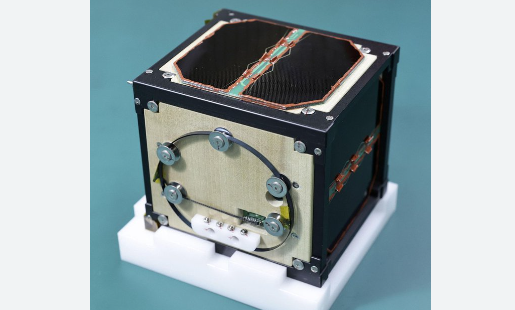SIEM (Security Information and Event Management)
Why is SIEM important?
Combining security information management (SIM) and security event management (SEM), security information and event management (SIEM) offers continuous observing and analysis of events as well as following and logging of security data for consistence or auditing purposes.
Set forth plainly, SIEM is a security arrangement that assists organizations with perceiving potential security dangers and weaknesses before they get a chance to disrupt business tasks. It surfaces client conduct anomalies and utilize artificial intelligence to mechanize large numbers of the manual processes related with threat detection and occurrence reaction and has turned into a staple in current security operation centers (SOCs) for security and compliance management use cases.
How does SIEM work?
At the most fundamental level, all SIEM solutions play out some level of data aggregation, union and arranging capabilities to recognize dangers and adhere to data compliance requirements. While certain solutions change in ability, most deal a similar center arrangement of functionalities:
Log Management
SIEM catches event data from an extensive variety of source across an association’s entire network. Logs and stream data from clients, applications, resources, cloud environment, and networks is gathered, stored and examined continuously, enabling IT and security teams to consequently deal with their network’s event log and network stream information in one unified location.
Some SIEM solutions likewise coordinate with third-party threat intelligence takes care of to connect their internal security information against recently recognized threats signature and profiles. Integration with real-time threat feeds enable teams to block or detect new types of attack signatures.
Event Correlation and Analytics
Event Correlation is a fundamental piece of any SIEM solution. Using progressed examination to identify and understand many-sided data patters, event connection gives bits of knowledge to find and mitigate expected threats to business security rapidly. SIEM solutions altogether work on Mean Time to Detect (MTTD) and Mean Time to Respond (MTTR) for IT security groups by offloading the manual workflows associated with the in-depth analysis of security events.
Incident Monitoring and Security Alerts
Because they enable centralized management of on-premise and cloud-based infrastructure, SIEM solutions are able to identify all entities of the IT environment. This allows SIEM technology to monitor for security incidents across all connected users, devices, and applications while classifying abnormal behavior as it is detected in the network. Using customizable, predefined correlation rules, administrators can be alerted immediately and take appropriate actions to mitigate it before it materializes into more significant security issues.
Compliance Management and Reporting
SIEM solutions are a famous decision for associations subject to various types of administrative consistence. Because of the automated data assortment and analysis that it gives, SIEM is a significant tool for get-together and confirming consistence information across the whole business foundation. SIEM arrangements can create ongoing consistence reports for PCI-DSS, GDPR, HIPPA, SOX, and other compliance standards, Reducing the burden of safety management and detecting potential violations early so they can be tended to. Many of the SIEM solutions come with pre-built, out-of-the-box add-ons that can generate automated reports designed to meet compliance requirements.
Tools and features involved in a SIEM solution
Log Data Management
Collection of log data is the foundation of Security Information and Event Management. Real-time data collection, analysis and correlation maximizes productivity and efficiency.
Network visibility
By assessing packet captures between for perceivability into network streams, the SIEM analytics can get additional insights into assets, IP addresses and protocols to uncover malicious files or the information exfiltration of Personally Identifiable Information (PII) getting across the network.
Threat Intelligence
Having the option to integrate either proprietary or open-source knowledge takes care of into your SIEM solution is essential to perceive and battle modern-day vulnerabilities and attack signatures.
Analytics
Not all SIEM solutions offer the same level of data analysis. Solutions that consolidate next-gen innovation, for example, AI and machine learning consciousness help to research more sophisticated and complex attacks as they emerge.
Real-time Alerting
SIEM solutions can be altered to business needs, utilizing pre-characterized, tiered alerts and warnings across various groups.
Dashboards and reporting
In certain associations, hundreds or even a great many network events can occur consistently. Understanding and reporting incidents in an adjustable view, with no lag time is essential.
IT Compliance
Regulatory compliance requirements vary considerably from one organization to the next. While not all SIEM tools offer the full scope of consistence inclusion, associations in vigorously directed businesses focus on auditing and on-request reporting over different elements.
Security & IT Integrations
Organizational visibility begins with integrating the SIEM with a variety of security and non-security log sources; established organizations will benefit from a SIEM that integrates with existing investments in security and IT tooling.
The benefits of SIEM
Regardless of how large or small your organization may be, taking proactive steps to monitor for and mitigate IT security risks is essential. SIEM solutions benefit enterprises in a variety of ways and have become a significant component in streamlining security workflows. Some of the benefits include:
Advanced real-time threat recognition
SIEM active monitoring solutions across your entire infrastructure significantly reduces the lead time required to identify and react to potential network threats and vulnerabilities, helping to strengthen security posture as the organization scales.Regulatory compliance auditing
SIEM solutions enable centralized compliance auditing and reporting across an entire business infrastructure. Advanced automation streamlines the collection and analysis of system logs and security events to reduce internal resource utilization while meeting strict compliance reporting standards.AI-driven automation
Today’s next-gen SIEM solutions integrate with powerful Security Orchestration, Automation and Response (SOAR) capabilities, saving time and resources for IT teams as they manage business security. Using deep machine learning that automatically adapts to network behavior, these solutions can handle complex threat identification and incident response protocols in significantly less time than physical teams.Improved organizational efficiency
Because of the improved visibility of IT environments that it provides, SIEM can be an essential driver of improving interdepartmental efficiencies. With a single, unified view of system data and integrated SOAR, teams can communicate and collaborate efficiently when responding to perceived events and security incidents.For more information on the benefits of Security Information and Event Management and if it’s right for your business, explore additional SIEM resources from IBM’s security intelligence experts.
Detecting Advanced and Unknown Threats
Considering how quickly the cybersecurity landscape changes, organizations need to be able to rely on solutions that can detect and respond to both known and unknown security threats. Using integrated threat intelligence feeds and AI technology, SIEM solutions can successfully mitigate against modern-day security breaches such as:
- Insider threats – Security vulnerabilities or attacks that originate from individuals with authorized access to company networks and digital assets. These attacks could be the result of compromised credentials.
- Phishing attacks – Social engineering attacks masquerading as trusted entities, often used to steal user data, login credentials, financial information, or other sensitive business information.
- SQL Injections – Malicious code executed via a compromised webpage or application designed to bypass security measures and add, modify, or delete records in an SQL database.
- DDoS Attacks – A Distributed-Denial-of-Service (DDoS) attack designed to bombard networks and systems with unmanageable levels of traffic, degrading performance of websites and servers until they are unusable.
- Data exfiltration – Data theft or extrusion is commonly achieved by taking advantage of common or easy-to-crack passwords on network assets, or through the use of an Advanced Persistent Threat, or APT.
Conducting Forensic Investigations
SIEM solutions are great for leading computerized forensic investigations once a security incident happens. SIEM solutions permit associations to effectively collect and analyze log information from each of their computerized assets in a single spot. This empowers them to recreate past incidents or analyze new ones to investigate suspicious activity and implement more effective security processes.
Assessing and Reporting on Compliance
Compliance auditing and reporting is both an important and testing task for some associations. SIEM solutions emphatically lessen the resource expenditures expected to deal with this process by giving continuous reviews and on-demand reporting of regulatory compliance whenever needed.
Observing Users and Applications
With the rise in popularity of remote workforces, SaaS applications and BYOD (Bring Your Own Device) policies, associations need the degree of perceivability important to mitigate network risks from outside the traditional network perimeter SIEM solutions track all organization action across all clients, gadgets, and applications, fundamentally further developing straightforwardness across the whole infrastructure and identifying dangers regardless of where digital assets and services are being accessed.
SIEM implementation best practices
Previously or after you’ve put resources into your new solution, here are some SIEM implementation best practices you should follow:
- Begin by completely grasping the scope of your implementation. Characterize how your business will best benefit deployment and set up the proper security use cases.
- Design and apply your predefined information relationship rules across all frameworks and organizations, including any cloud deployments.
- Identify all of your business compliance requirements and guarantee your SIEM solutions is designed to audit and report on these principles continuously so you can all the more likely understand your risk posture.
- Catalog and characterize all digital resources across your association’s IT infrastructure. This will be essential while managing gathering log information, distinguishing access misuses, and observing organization action.
- Establish BYOD (Bring Your Own Device)policies, IT configurations, and restrictions that can be monitored when integrating your SIEM solution.
- Regularly tune your SIEM configurations, ensuring you’re reducing false positives in your security alerts.
- Document and practice all incident response plans and workflows to ensure teams are able to respond quickly to any security incidents that require intervention.
- Automate where possible using artificial intelligence (AI) and Security Orchestration, Automation, and Response (SOAR) capabilities.
- Evaluate the possibility of investing in an MSSP (Managed Security Service Provider) to manage your SIEM deployments. Depending on the unique needs of your business, MSSPs may be better equipped to handle the complexities of your SIEM implementation as well as regularly manage and maintain its continuous functionality.
Blog By: Priyanka Rana

08
FebSIEM- Security Information And Event Management
Feb 08, 2023Recent Blog
The ‘LignoSat’Nov 12, 2024
India’s First Writer’s VillageOct 28, 2024
The First Tri-Fold Of SamsungOct 24, 2024
India’s New Spam Tracking SystemOct 23, 2024
ICC T20 Women’s World Cup Winner 2024Oct 22, 2024




